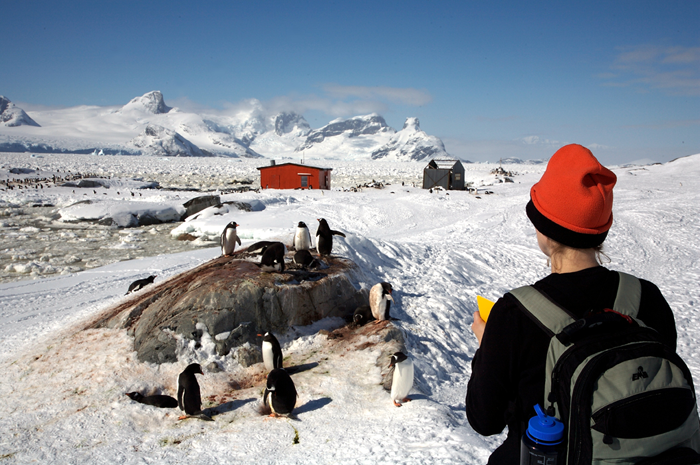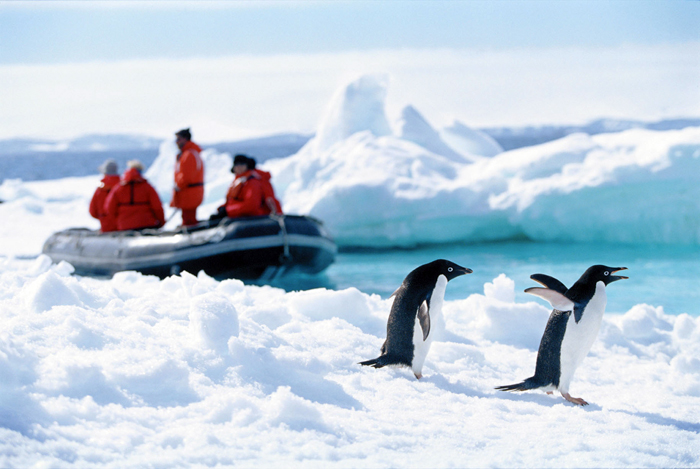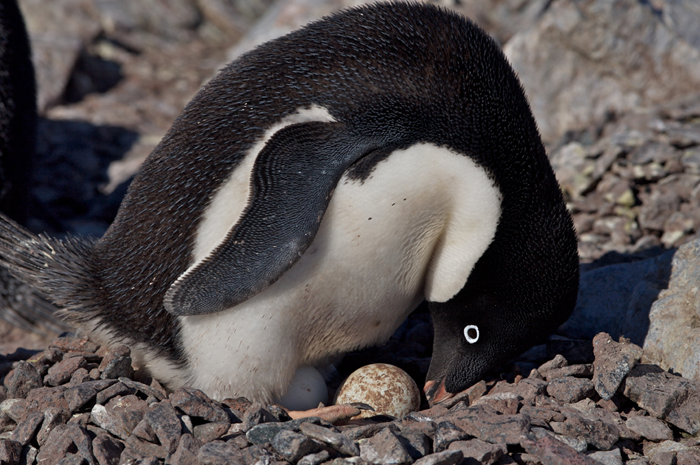|
Losing countPlunging seabird populations has researchers turn to new types of analyses for answersPosted August 1, 2008
Diminishing sea ice. Declining krill populations. Increasing snowfall and rain. Now it appears even ticks are harassing Adélie penguins along the rapidly warming Antarctic Peninsula. Scientists are well aware that the cold and dry peninsula is turning into a warmer and wet subantarctic ecosystem. In turn, seabirds like Adélies and petrels are struggling to survive. But what is the chain of events? How do all of these pieces of the climate change puzzle fit together? To blame it all on warming temperatures simplifies the problem, according to Ron Naveen, president of Oceanites Inc. The site inventory, launched in 1994 with a National Science Foundation Over the last five years, thanks to additional support from the NSF, Oceanites has also worked during the austral summer out of a field camp at Petermann Island, a 2-kilometer-long island home to one of the world’s southernmost colony of gentoo penguins, as well as a small group of Adélies. More recently, Oceanites has partnered with William Fagan’s Conservation Biology, Community Ecology and Theoretical Ecology Lab Or as Naveen describes it: “We’ll take our data and put it into this statistical blender to explain precisely how climate change is causing certain effects in the peninsula. What’s the specific mechanism? It could be that it’s different on the east side than the west [of the peninsula]. It’s much more complicated a picture than we previously discovered. “The hope here is to understand a little more directly … how change really occurs. What is the mechanism driving it? Is it predator populations, overfishing krill? Is it the weather?” Heather Lynch, a post-doctoral researcher in the Fagan Lab, is heading up the statistical analysis. One of the tools she is using to model the data — Naveen’s statistical blender — is called hierarchical Bayesian analysis. The statistical model will help make sense of the temporal and spatial changes under way on the peninsula, as well as how variables like increased rainfall and diminishing sea ice relate to the penguin populations. “The models are simply a way of getting around what is sort of a weak data problem,” Lynch explained. “We have relatively limited information from the Antarctic Site Inventory about a lot of sites. We’re trying to combine those data along with other available biological and physical data into a more comprehensive framework as to what’s going on peninsula-wide. “We’re trying to collate a lot of information, which is observational in nature, so we don’t have a lot of control over it; but taken as a composite, we can put together a synthetic portrait of what’s going on,” she added. Over the last 50 years, the peninsula has warmed an average of about 3 degrees Celsius, with winter temperatures about double that. The heat wave has pretty much cleared sea ice away during the summer around some parts of the region. In the winter, sea ice forms later in the season and retreats earlier. That’s a problem because krill, shrimplike crustaceans central to the Adélie diet, need sea ice for winter grazing. The ice is also a key habitat for the penguins. Throw into the mix heavier snowfall, which covers the ground and prevents the birds from making nests for laying eggs, and more precipitation falling as rain — something the penguin chicks are poorly adapted to handle. “Rain kills,” Lynch said, because the fluffy down that allows the chicks to survive a sizeable snowstorm is useless when wet. “If they get three days of heavy rain, it’s all over. Because, if they get wet, they die of cold.” |



For USAP Participants |
For The Public |
For Researchers and EducatorsContact UsU.S. National Science FoundationOffice of Polar Programs Geosciences Directorate 2415 Eisenhower Avenue, Suite W7100 Alexandria, VA 22314 Sign up for the NSF Office of Polar Programs newsletter and events. Feedback Form |





